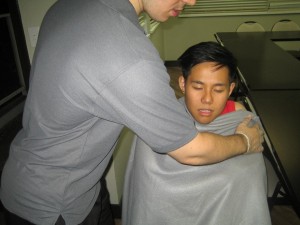If an individual sustains a bite from a water moccasin or cottonmouth snake, immediate emergency care is important. The symptoms of a water moccasin snake bite include swelling, pain, bleeding at the site of the bite, low blood pressure, difficulty breathing, nausea and vomiting, changes in the skin color, tingling and numbness, fatigue, thirst, tissue damage and weakness.
http://youtu.be/_iF-ByukAf8
Identifying a water moccasin snake
The water moccasin snake or cottonmouth is considered as a type of pit viper and capable of delivering a painful and deadly bite in severe cases. These snakes spend most of their time in water and usually bite when people bath or go fishing in the water.
An adult snake can reach up to 32 inches in length with the males longer than the females. The head is very long with a blunt snout with a rim on the top of the head that protrudes over the mouth. These snakes tend to vary in color depending on where they live that ranges from black, brown, yellow, olive green and gray. Due to the various colors, they are often mistaken for other species of snakes. They also have various bands of color on the face and body with a white-colored belly. These bands of color start to fade as they get older.
Water moccasins will coil and show off their fangs if they are threatened. It is important to retreat at that point or they will bite. These snakes are strong swimmers and spend most of the time in water.
Steps to perform if an individual sustains a water moccasin snake bite

- Call for emergency assistance right away. You have to keep the individual calm and try to limit movement if possible. Keep the affected area lower than the level of the heart to slow the movement of the venom.
- Utilize a pump suction device if you have one available to remove the venom. Make sure that you will follow the instructions stated by the manufacturer.
- Remove any constricting items close to the site of the bite including jewelry such as rings or bracelets. Take note that the area can swell and it is easier to remove the items before the swelling manifests.
- Monitor the vital signs of the individual such as the pulse, temperature, breathing and blood pressure.
- You have to treat for shock if the individual shows signs of trauma such as clamminess, pale skin and shaking. Place the position flat and elevate the feet about 1 foot into the air. Do not forget to cover the individual with a blanket to promote warmth.
Important tips to bear in mind
In case the water moccasin was killed, you can bring it safely for identification purposes. You have to be careful when handling the snake since a reflex action can cause the snake to bite up to an hour after it has died. If the snake escaped, do not look for it since it will increase your risk for a bite.
You can avoid snake bites by leaving snakes alone, using tall rubberized boots when walking in the wilderness as well as keeping hands and feet from areas you cannot see. There might be a water moccasin snake hiding and if it feels threatened, it can deliver a nasty bite.
